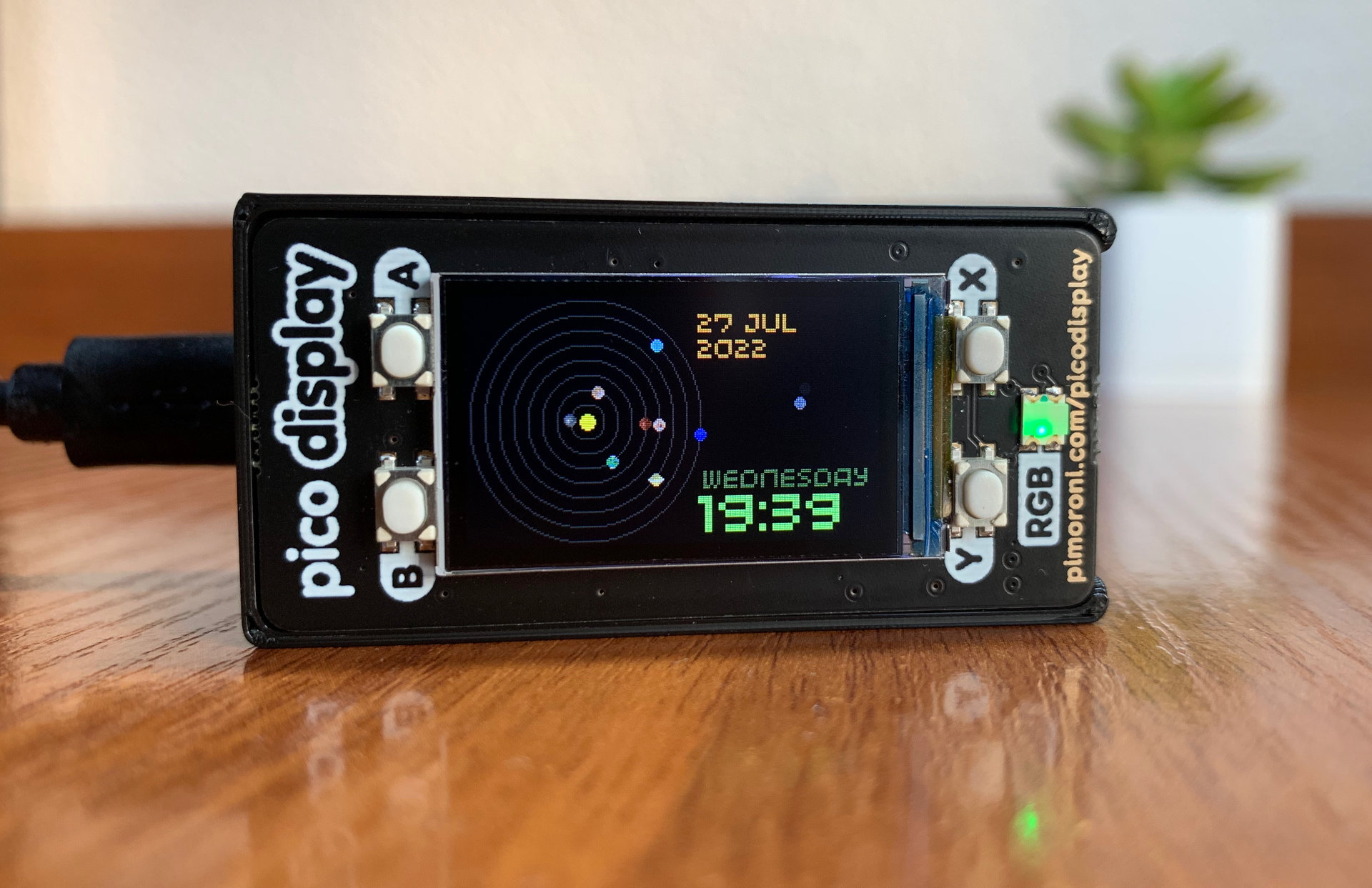A miniature device depicting the relative position of the planets in Solar System.
- Raspberry Pi Pico
- Precision RTC Module (DS3231)
- Pico Display Pack
The software is written in MicroPython 1.15 and uses a custom build from Pimorony which includes drivers for the display. Download it from the official Pimorony repository here.
- Download the MicroPython UF2.
- Push and hold the BOOTSEL button and plug your Pico into the USB port of your computer. Release the BOOTSEL button after your Pico is connected.
- It will mount as a Mass Storage Device called RPI-RP2.
- Drag and drop the MicroPython UF2 file onto the RPI-RP2 volume.
To upload and configure your Pico Solar System you will need to install rshell. Make sure you have pip installed.
pip3 install rshell
- Download Pico Solar System
git clone https://github.com/dr-mod/pico-solar-system.git
- Open the directory with the source code
cd pico-solar-system
- Copy required python files to your pico
rshell
cp *.py /pyboard/
- Set time & configure the RTC module
repl
import time
import ds3231
rtc = ds3231.ds3231()
rtc.set_time(time.time())
A 3d printable case for this project can be found here.
If you would like to support what I do and keep me caffeinated, you can do it here:

